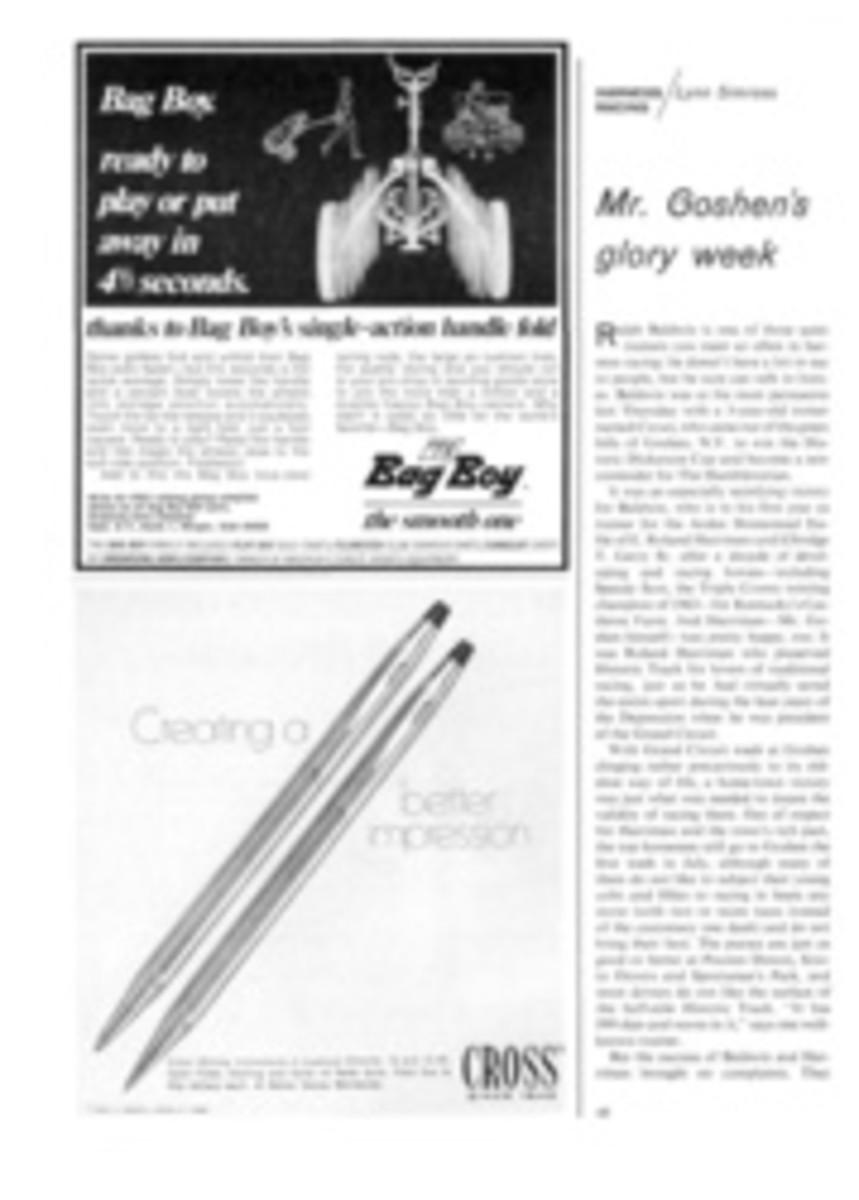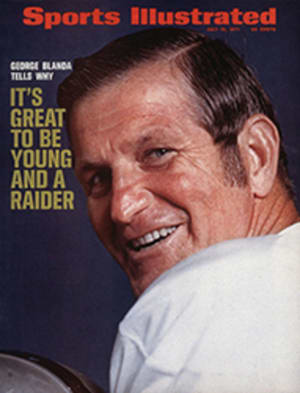
Baseball's First Masked Man
They called it a "rattrap," a "muzzle" and a "birdcage." One sportswriter complained, "There is a great deal of beastly humbug in contrivances to protect men from things which do not happen. There is about as much sense in putting a lightning rod on a catcher as there is a mask."
It was hardly the sort of reception one would expect for a device so well connected. After all, the catcher's mask did get its start at Harvard. Its inventor was a gentleman named Frederick Winthrop Thayer, and its first user was still another Cambridge man, James Alexander Tyng, a law student and member of the 1877 Crimson baseball team. Are these purveyors of beastly humbug? Of birdcages and rattraps? Hardly.
The fact is, life was not easy for baseball catchers in those days. Most receivers positioned themselves well behind the batter, or "striker," but since they wore no protective gear at all—not even a glove—they were prime targets for foul balls and bad bounces, and their trademarks were gnarled fingers, bruised chests and raw chins. The career expectancy of the average catcher was three or four seasons.
Jim (Deacon) White, star catcher of the Boston Red Stockings in the mid-1870s, made things even worse by insisting on taking a position within a few feet of the batter, giving his pitcher a better target and himself an edge in throwing out base stealers. Other catchers at first wanted no part of such heroics, but eventually the advantages overwhelmed the risks, and the closeup backstop became standard among professional, and ultimately college, squads.
One result of all this was that the Harvard team of 1877 started its preseason training without a catcher. Thayer, the Crimson coach, decided to ask Tyng to move in from the outfield. He had all the requisites of a good catcher—agility, quick reflexes and a strong throwing arm. But being a young man of handsome good looks, firm of mouth and aristocratic of nose, Tyng reacted predictably to the parade of broken beaks and shattered teeth from behind the plate. He refused. There is one thing about a Harvard education—it teaches the basics.
Thayer decided that since his best catching prospect was worried about getting his face mashed, he would have to figure out a way to protect it. A mask was the obvious answer but, since the catcher's mask did not exist, it would be necessary to invent one. Thayer was up to the challenge.
What he came up with was a spin-off from the fencer's mask, except with fewer and more widely spaced wires. He added shock-absorbing pads that rested on the forehead and cheeks, eventually making enough changes to justify obtaining a patent on the idea. A Cambridge tinsmith built a prototype mask for him, and Tyng tried it out in preseason workouts. Finally, on April 12, 1877, he used it in a game.
Despite the blustery cold and snow flurries, the contest attracted a crowd of 3,000, according to the Boston Globe. It was not much of a match. The Harvard Crimson described it as "one-sided and rather stupid." It ended with the score Harvard 11, Lynn 3. One of the highlights was the catching.
Tyng had two of Harvard's hits and scored two runs; more important, he made only two errors behind the plate, which was unusually low for the time. His performance moved the Crimson to say, "The new mask proved a complete success, since it entirely protected face and head and adds greatly to the confidence of the catcher, who need not feel that he is every moment in danger of lifelong injury. To the ingenious inventor of this mask we are largely indebted for the excellent playing of our new catcher, who promised to excel the fine playing of those who have previously held this position."
So much for the amateur view. When the press and baseball public eventually got around to assessing the new device, they found it, for the most part, wanting. One critic wrote in alarm, "We shall probably soon behold the spectacle of a player sculling around the bases with a stove funnel on his legs and boiler-iron riveted across his stomach." Deacon White tried the Thayer mask in a Boston game, but after a few pitches he threw it aside in disgust, claiming it obstructed his vision.
All this was typical of the day's view that any form of protection in baseball was less than manly, and nothing was more indicative of this attitude than the long delay before catchers got the other "tools of ignorance" that now enfold them. The first chest protector was a pad worn carefully under the blouse to avoid any chiding about it. The first protector worn out in the open was called a sheepskin, probably because that's what it was. John T. Clements of the Philadelphia Keystones of the Union League introduced it around 1884. Harry Decker, who played on several National League teams, introduced the first catcher's mitt around 1890. Roger Bresnahan of the New York Giants was the first to wear shin guards—an adaptation of the kind used by cricket players—in a game at the Polo Grounds in April 1907.
"They sure called me a lot of names when I first put them on," Bresnahan recalled years afterward. "But I guess they were a good idea. They tell me catchers still wear them."
Despite Deacon White's slur, many contemporary catchers came to Thayer asking him to run off one of his masks for them. Before long, he realized he had a pretty hot item in his birdcages, and on Jan. 15, 1878 he filed for the patent on his device, noting in his specifications that "it is not an infrequent occurrence...for a player to be severely injured in the face by a ball thrown against it." Thayer's patent (No. 200,358) was granted.
Three of Thayer's masks still exist, and each is considered the original. Two are in the Baseball Hall of Fame at Cooperstown, N.Y., one purported to be the first mask ever used and the other said to be the original model of the mask that Thayer submitted with his patent application. The third "original"—since plated with sterling silver—rests in a glass-enclosed cabinet in the reading room of the Harvard Varsity Club in Cambridge. Beside it is a card identifying it as "the first catcher's mask ever used in baseball."
Which one is truly the original? No one is sure, but Fred Thayer and Deacon White would have been astonished that the question ever came up.

